Ulf joins a driven boar hunt and discovers how unique management practices contribute not only to the smooth maintenance of the estate and its crops, but to the quality and excitement of the hunt
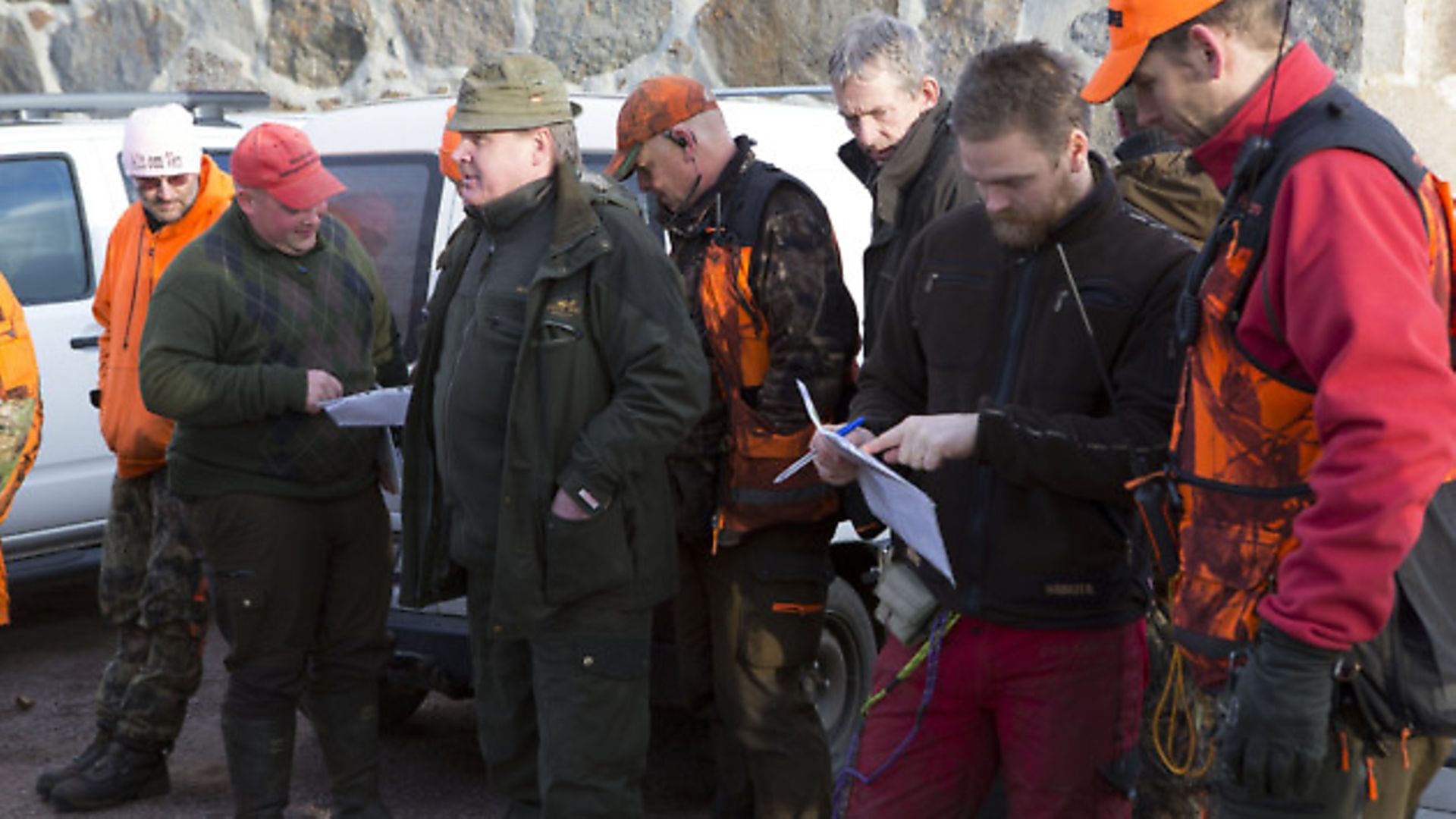 credit: Archant
credit: Archant
A good driven hunt for wild boar is an experience, and also a management tool. The Swedish estate Karsholm plans its wild boar management around two great hunts and 11 months of peaceful coexistence of wild boar and farming.
There are expectations in the air. Expectations, coffee fumes and a pleasant whiff of eager dogs. Inside a rebuilt old barn at Karsholm, southern Sweden, hunters greet old friends and new acquaintances.
It is time for the second wild boar hunt of November. It’s dark outside as gamekeeper Henrik Svensson passes his hat around for the draw of first stands.
Anders Lindqvist, a veteran guest of Karsholm hunts, grins as he unfolds a piece of paper reading ‘49’.He knows, as do those who shake his hand and congratulate him, that stand 49 is a good one. Anders will see action at this tried-and-tested game crossing.
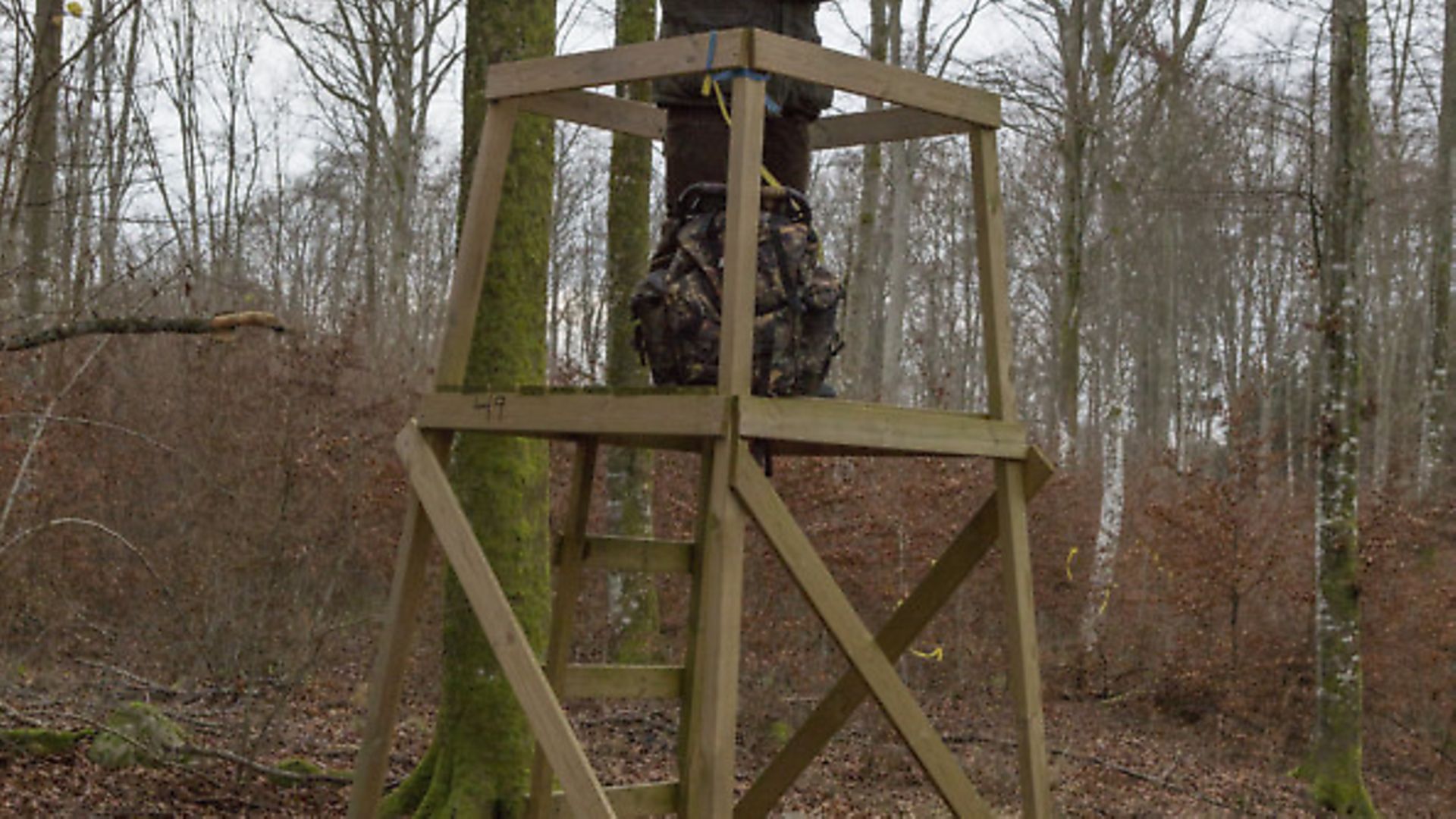 credit: Archant
credit: Archant
As Henrik explains, the system of allowing the game a lot of peace during the season is devised to keep them out of the crops, especially the wild boar. If they enter the fields, they are stalked and shot. But half the estate is covered by woods, where wild boar are fed and left alone. That way, they soon tend to avoid the fields.
“But obviously the owners want a few good hunts,” Henrik says. “We also need to keep the numbers down. Twice a year we do driven hunts in the woods.”
Alert on stand
Half an hour later, Anders climbs the high seat ladder. He arranges his equipment carefully on the board meant for sitting and remains standing. Everything is in easy reach and nothing is left where it may fall or cause noise. “You need to be constantly alert on these hunts,” he whispers. “There won’t always be a dog to alert you and game can cross the openings fast.”
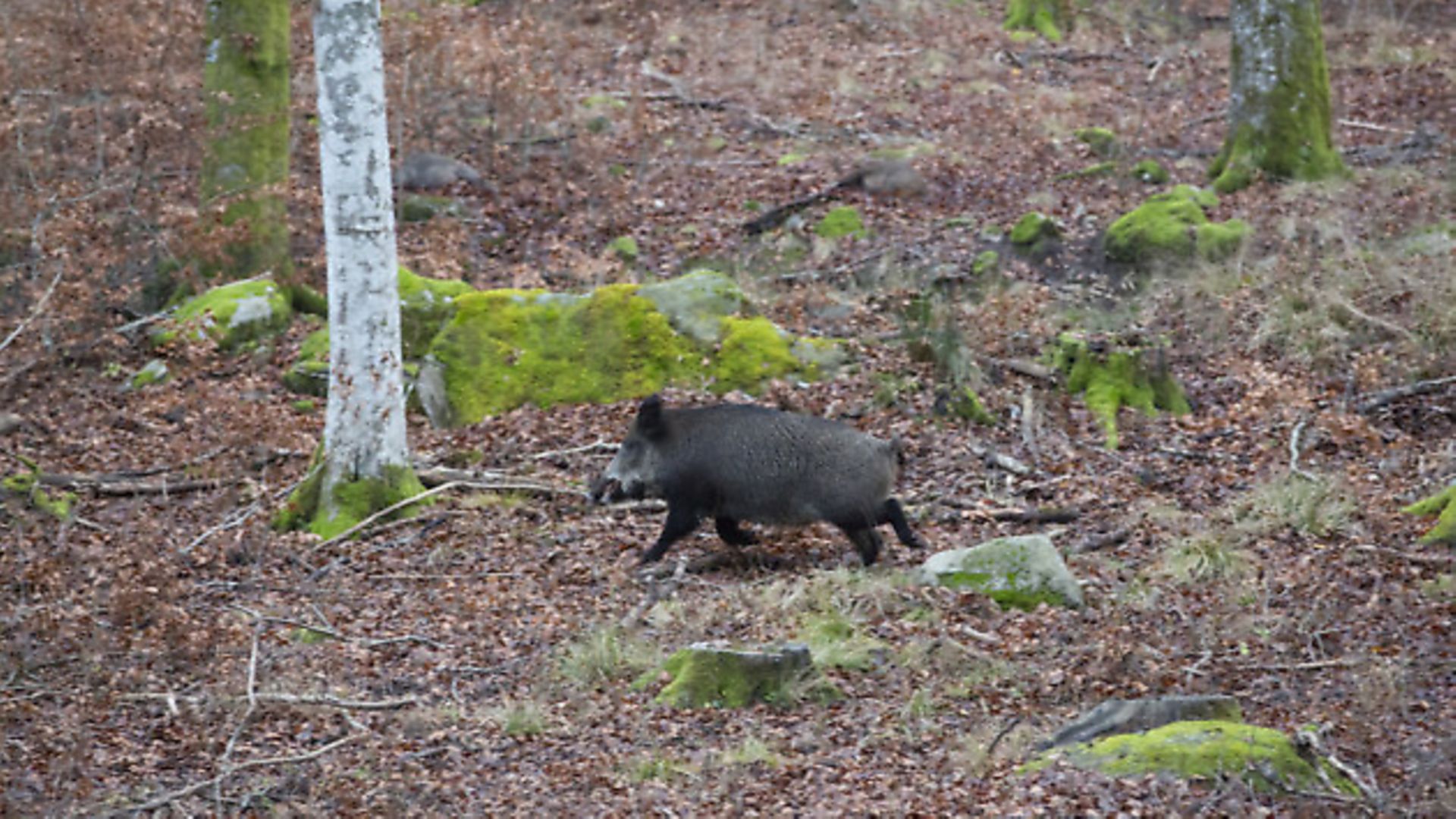 credit: Archant
credit: Archant
Anders hunts a lot and is well known on the estates for using his opportunities well, missing few chances and making very few mistakes.
Things are quiet for a few minutes, then he whispers that the dogs are released and the beaters on the move. He has a radio connected to his electronic earmuffs. It helps him follow the progress of the hunt, but it is not needed for the first piece of action. Anders has barely finished relaying the report when there’s fierce barking in the nearby spruce plantation. Apparently something has been lying up within 100m or so. Angry grunts let us know what it is.
First wild boar
A large spotted sow comes crashing through the spruce, before jumping a low old stone wall and passing Anders at 40m. “A big sow,” he says. “Not shootable.” Boars and smaller wild boar are the target today. Medium-sized single females may also be shot, but Anders does not care to gamble that this sow isn’t too big or hasn’t just left her young behind. It appears to have been a wise move as an hour or so later, two small piglets come sneaking out of the spruce in the direction the sow went. They go a short way, then hide away in a brush pile.
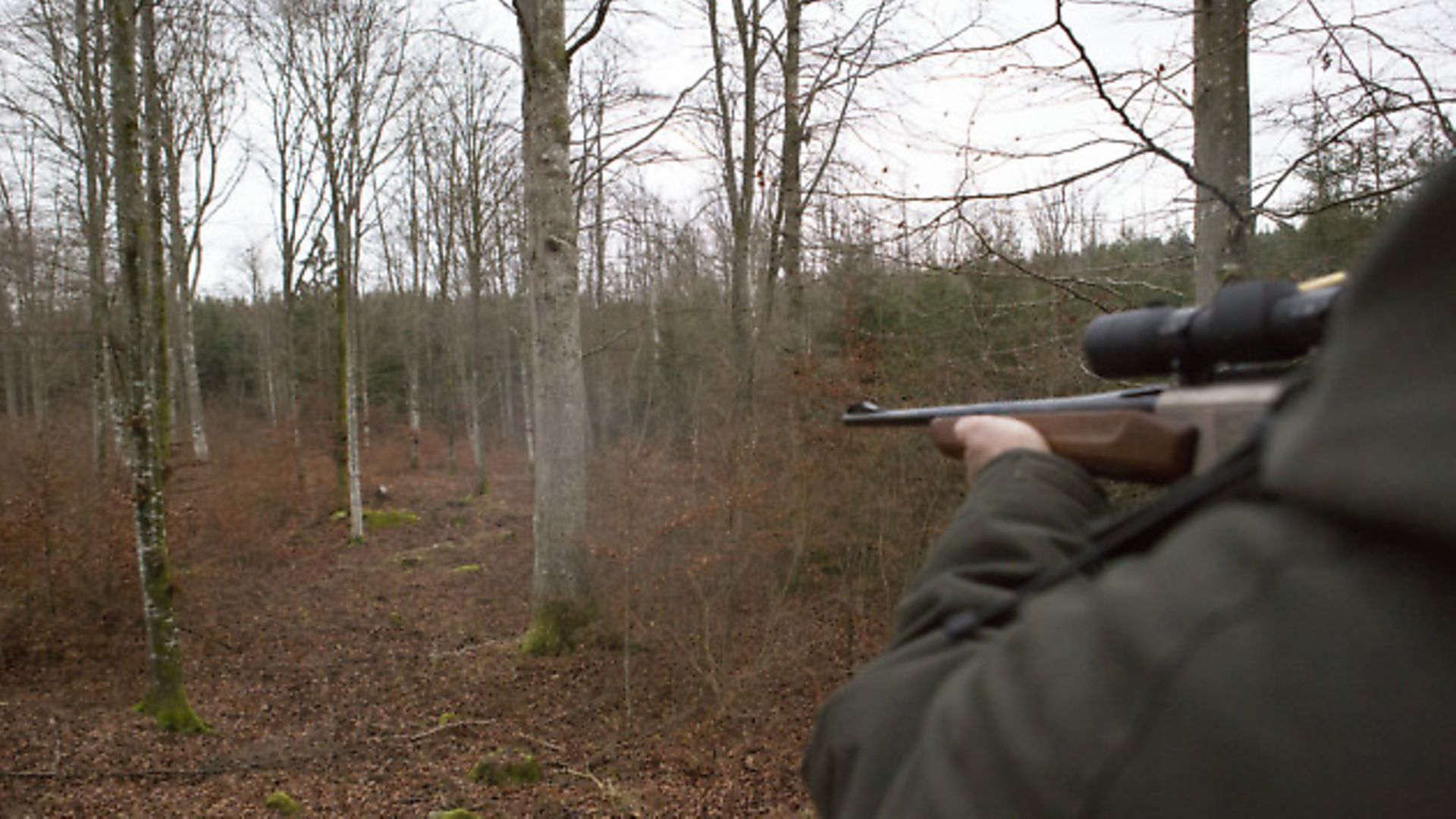 credit: Archant
credit: Archant
By then, a lot had happened. A single wild boar Anders decides is a young, single female runs out across a clearing and is stopped by a well-placed bullet. Not much later, a small group, apparently two larger females and a few young, breaks across the same clearing and Anders drops two yearlings with two shots.
Dogs can be heard constantly and shots ring out from various stands. A few adult roe deer and a single fallow deer pass by (the former not open on this hunt, the latter a little too far away). Two more large female wild boar pass and are passed over.
More to come
Anders still stands, alert and ready. He has let several animals pass, but then three yearling wild boar sneak in from behind. This group leave one of their number. A single shot indicates the next Gun got another one.
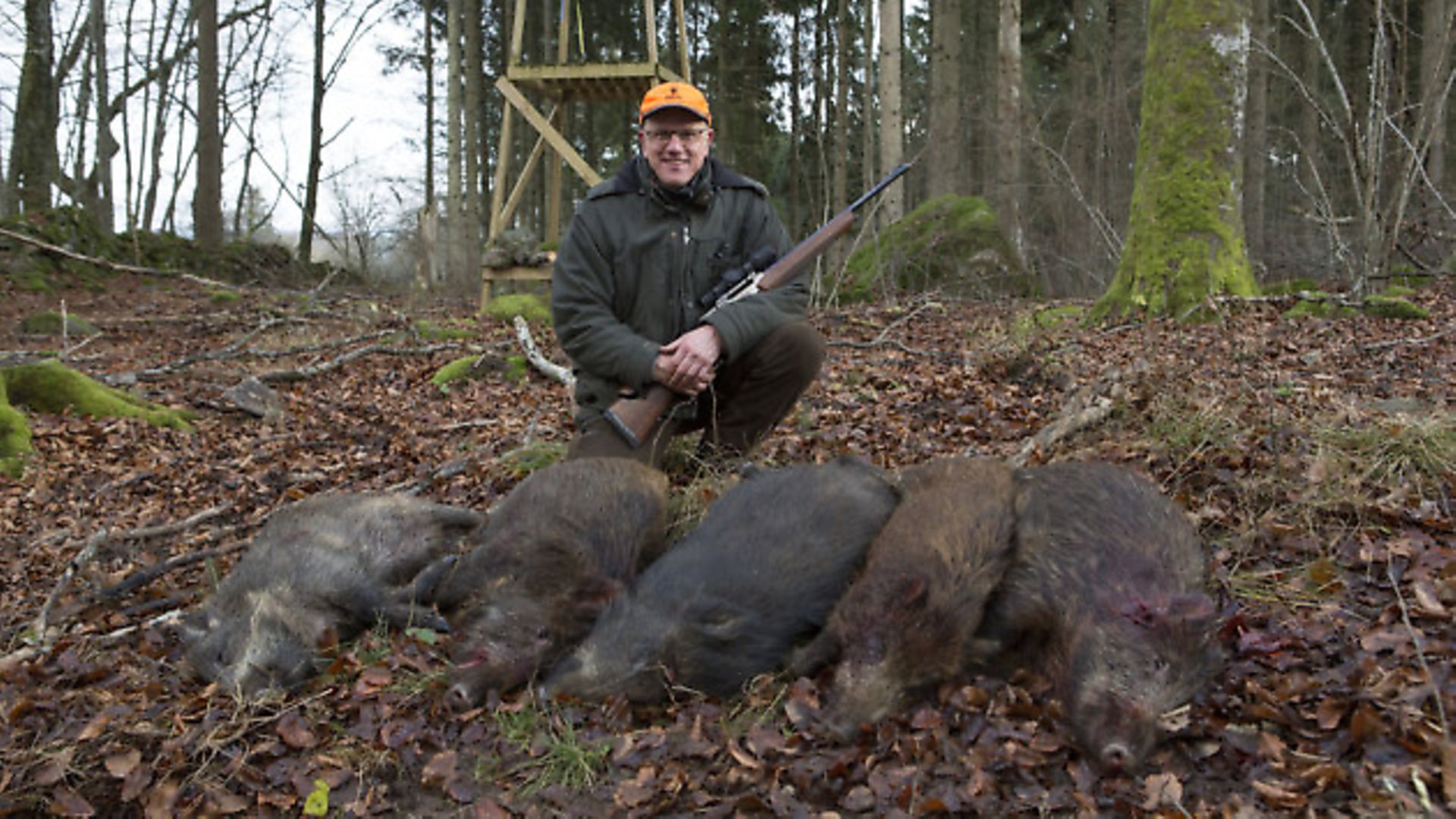 credit: Archant
credit: Archant
Gradually, the sounds of shots and barking move further away. Anders allows himself to relax a little, happy with his morning. That’s when the piglets emerge. Anders watches the small pigs move and hide again. A dog passes by but does not find either of them and, as the spotted sow was not shot anywhere else, they were in luck that day.
Not so their somewhat older cousin, who also uses the lull in the hunt to reposition. First there’s a soft rustling in the spruce plantation. Then a yearling comes trotting up to the old stone wall. There’s a breach in the wall and as it comes through, Anders drops it. That’s his fifth wild boar on this stand. There’s more to come.
No stone unturned
There will be one more large drive before the day is out. After lunch, I join beater Magnus Pettersson and his dogs. After an hour we pass Anders’ high seat, who points to two dead wild boar in a nearby bog. He later gets one more.
But there are many more shots. We meet dogs, hear dogs, see wild boar in the thickets and hear others. Magnus brings four dogs to the hunt and three into this drive. Two are loose, a close-ranging spaniel and a wide-ranging terrier. A young gonski Polski, a boar dog breed of Polish origin, is held on a leash.
“I try to avoid pack hunting,” Magnus says. “Too many dogs may pull down small wild boar and if they join up they will leave too much of the drive unhunted.”
He keeps his third dog on a leash almost to the end of the drive so that, as most other dogs are busy elsewhere, he still has one dog left to make a last search of a spruce plantation the wild boar tend to return to.
On this day, no stone is left unturned, but once the last dog is back, the wild boar will enjoy 11 months of total peace. They will soon prefer these woods to the fields.
____________________
More Hunting Abroad
You may also like:
Wild Boar: social structure and best management practises
*VIDEO* Fieldsports Britain - wild boar, goose, shoot etiquette & ‘Hello Charlie!”
Saucy ‘pulled’ wild boar with brioche buns